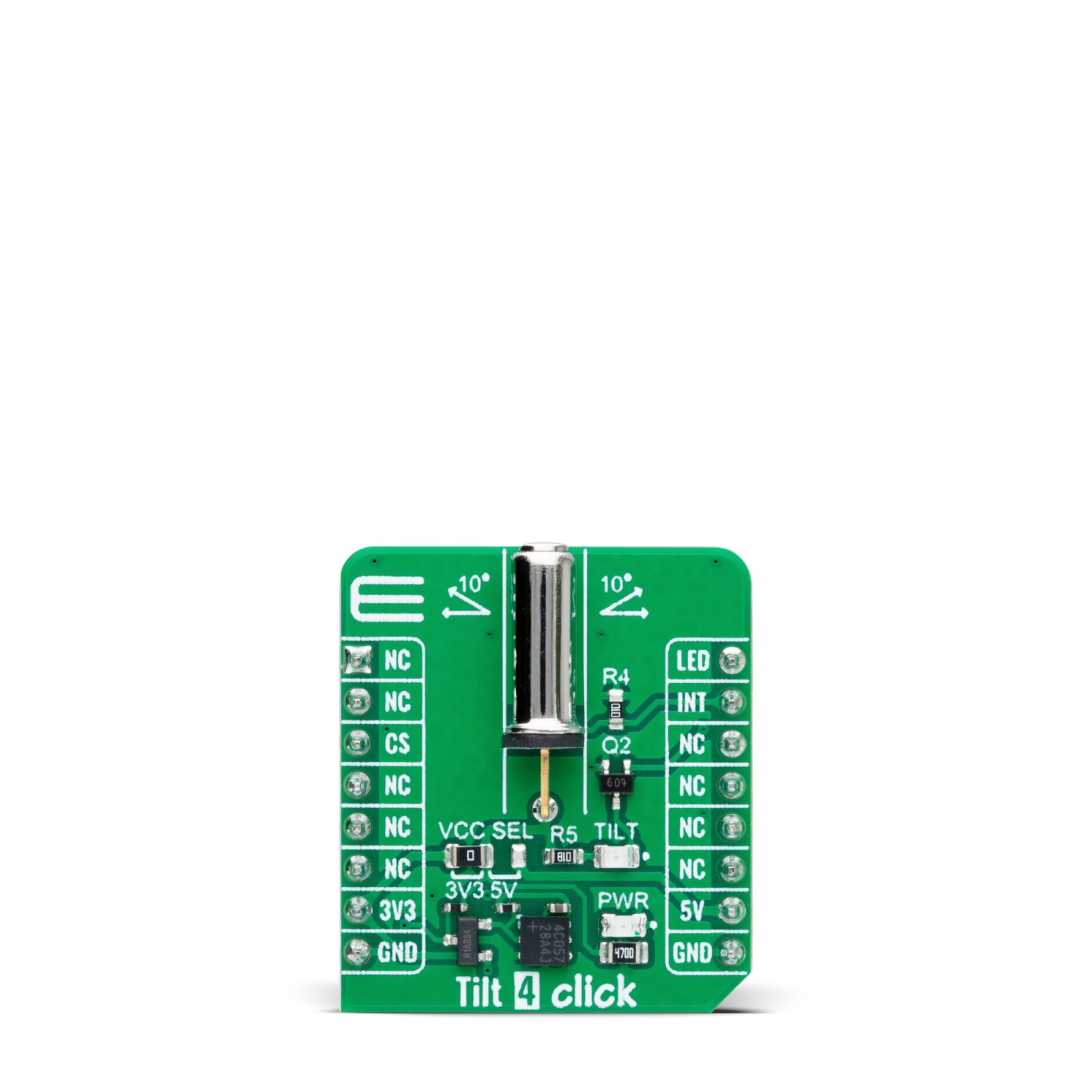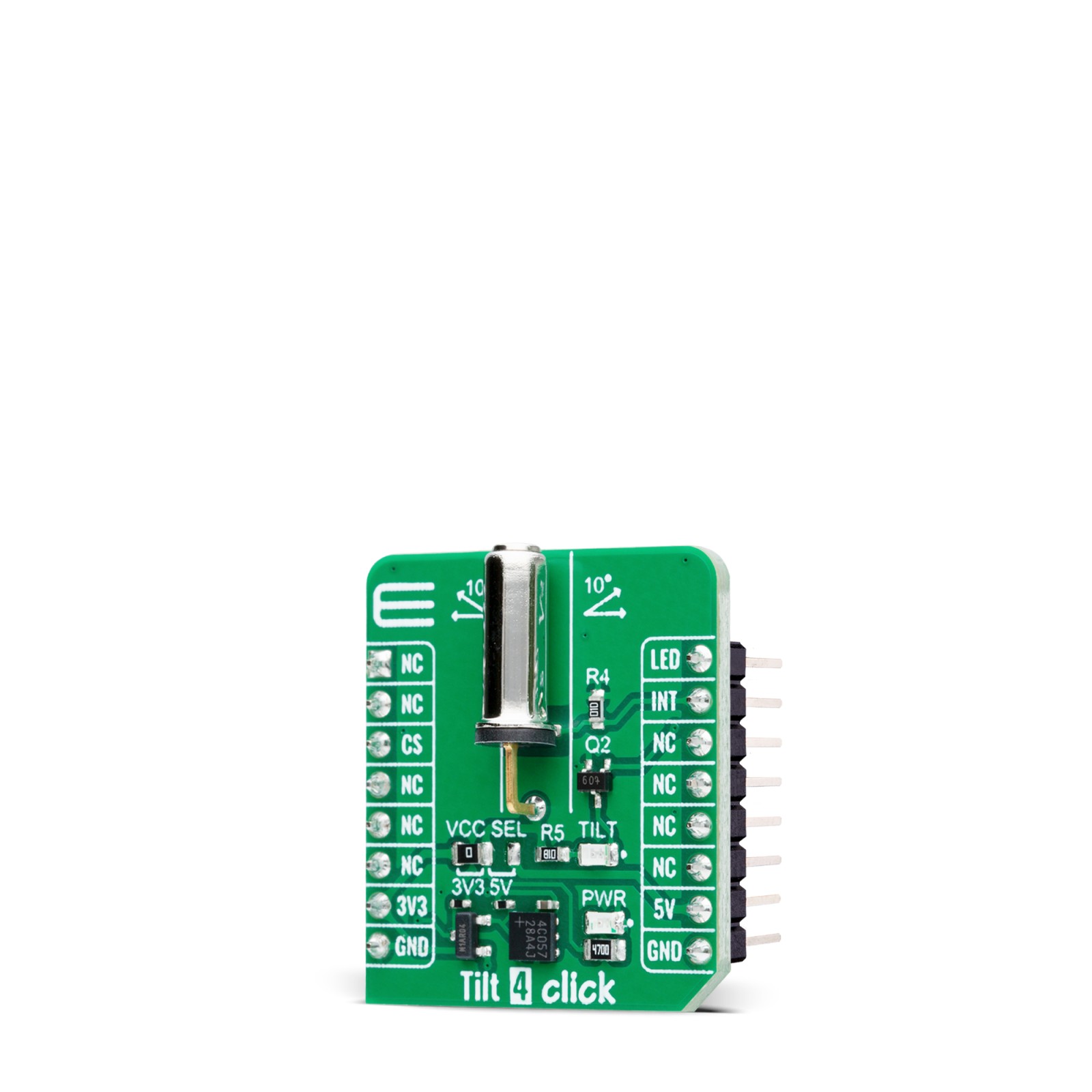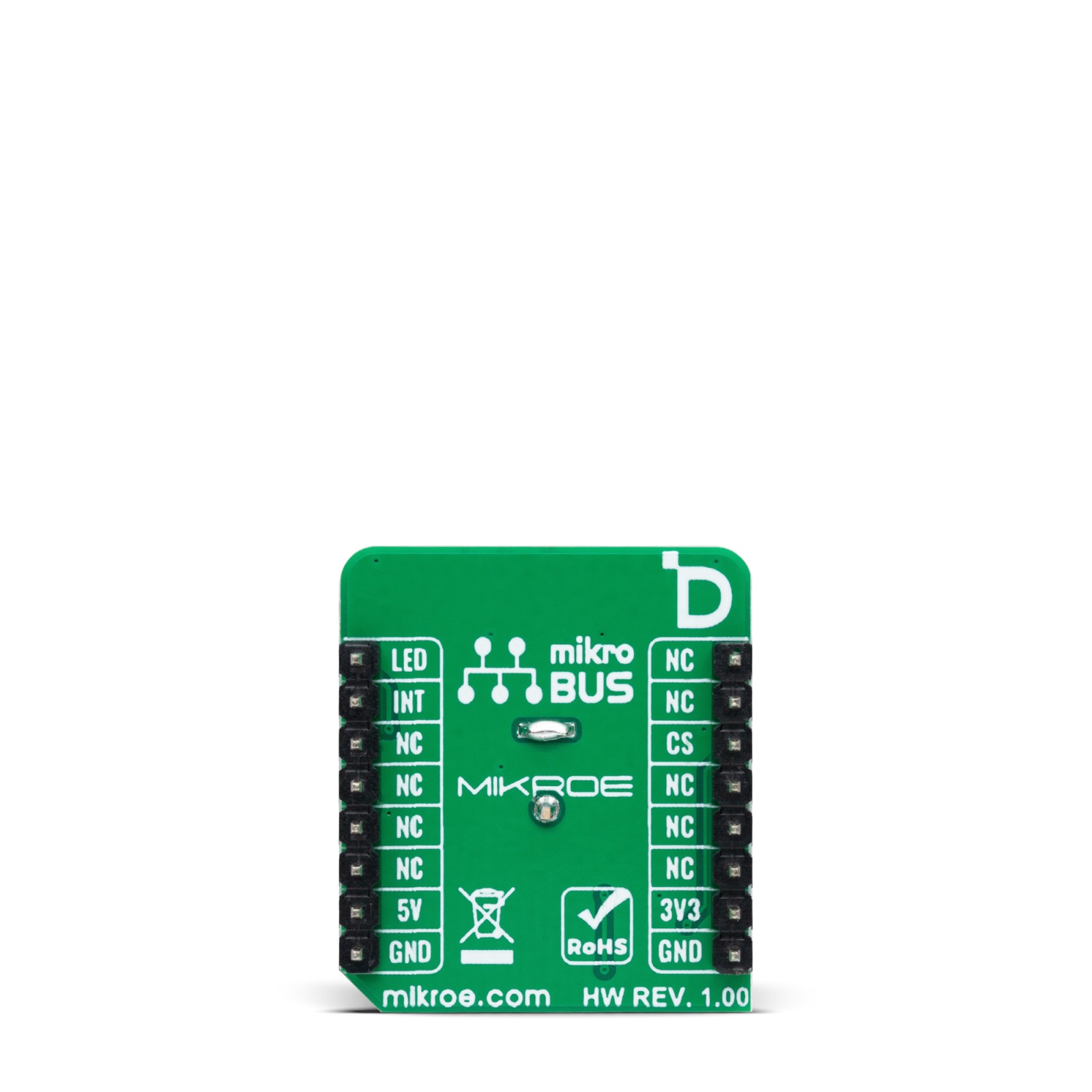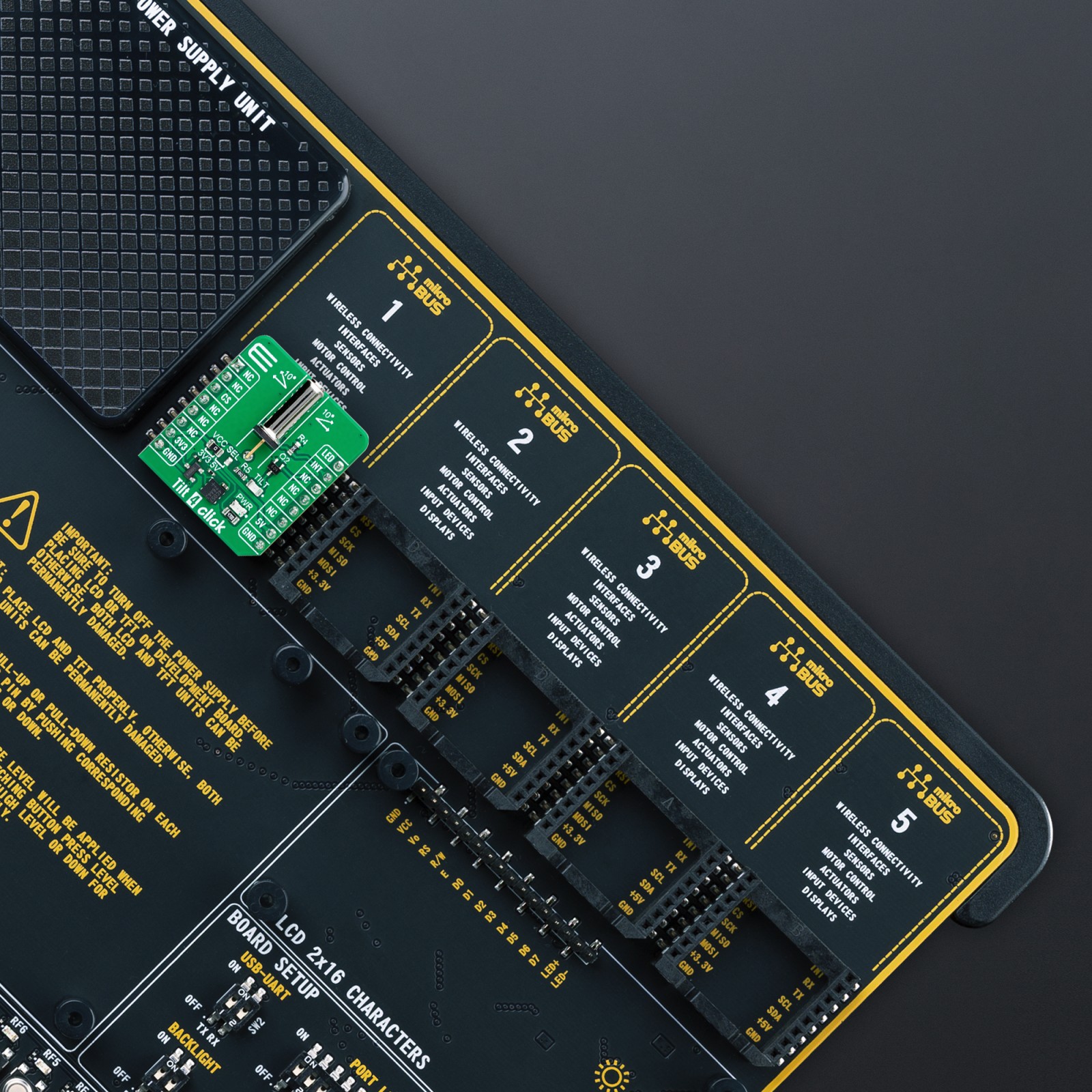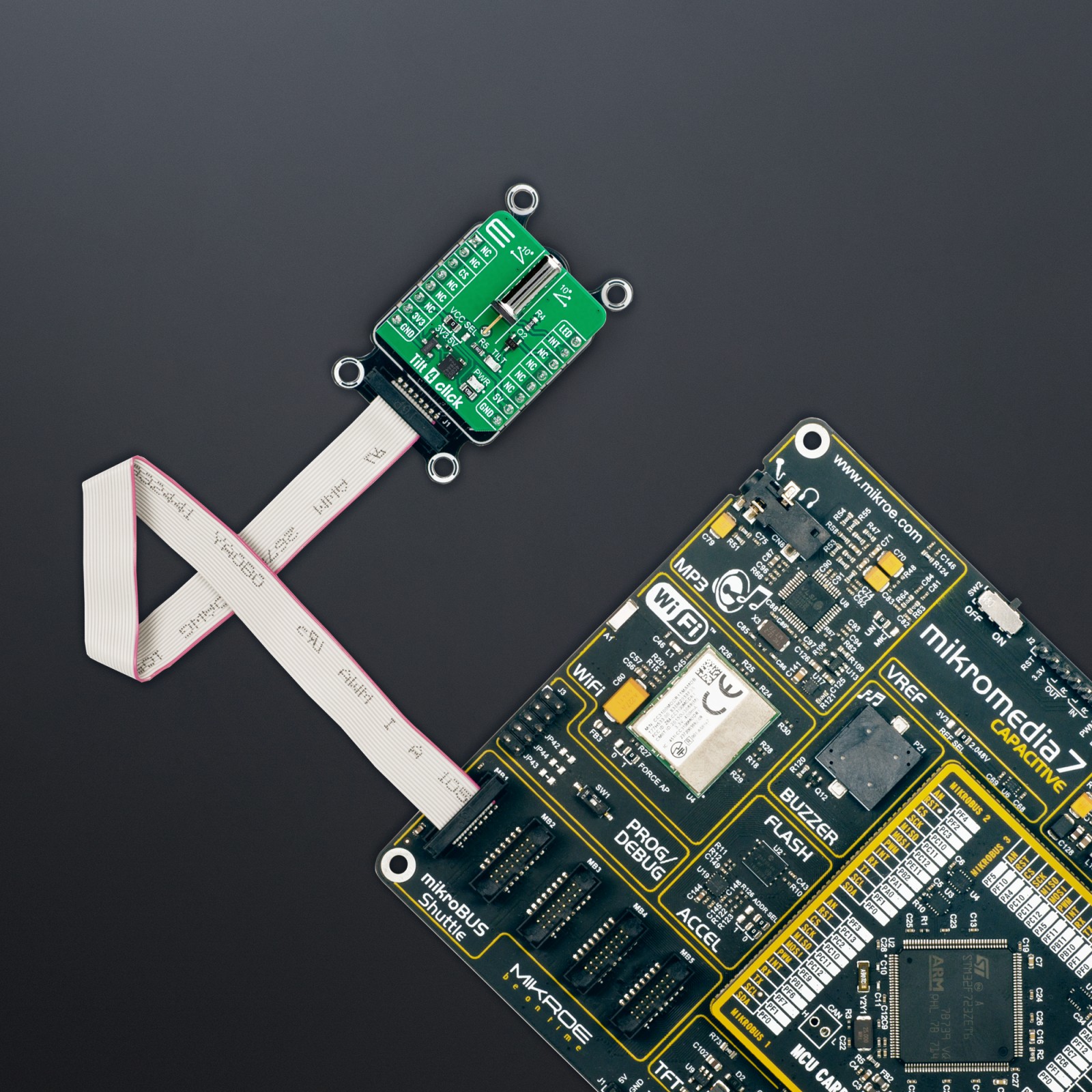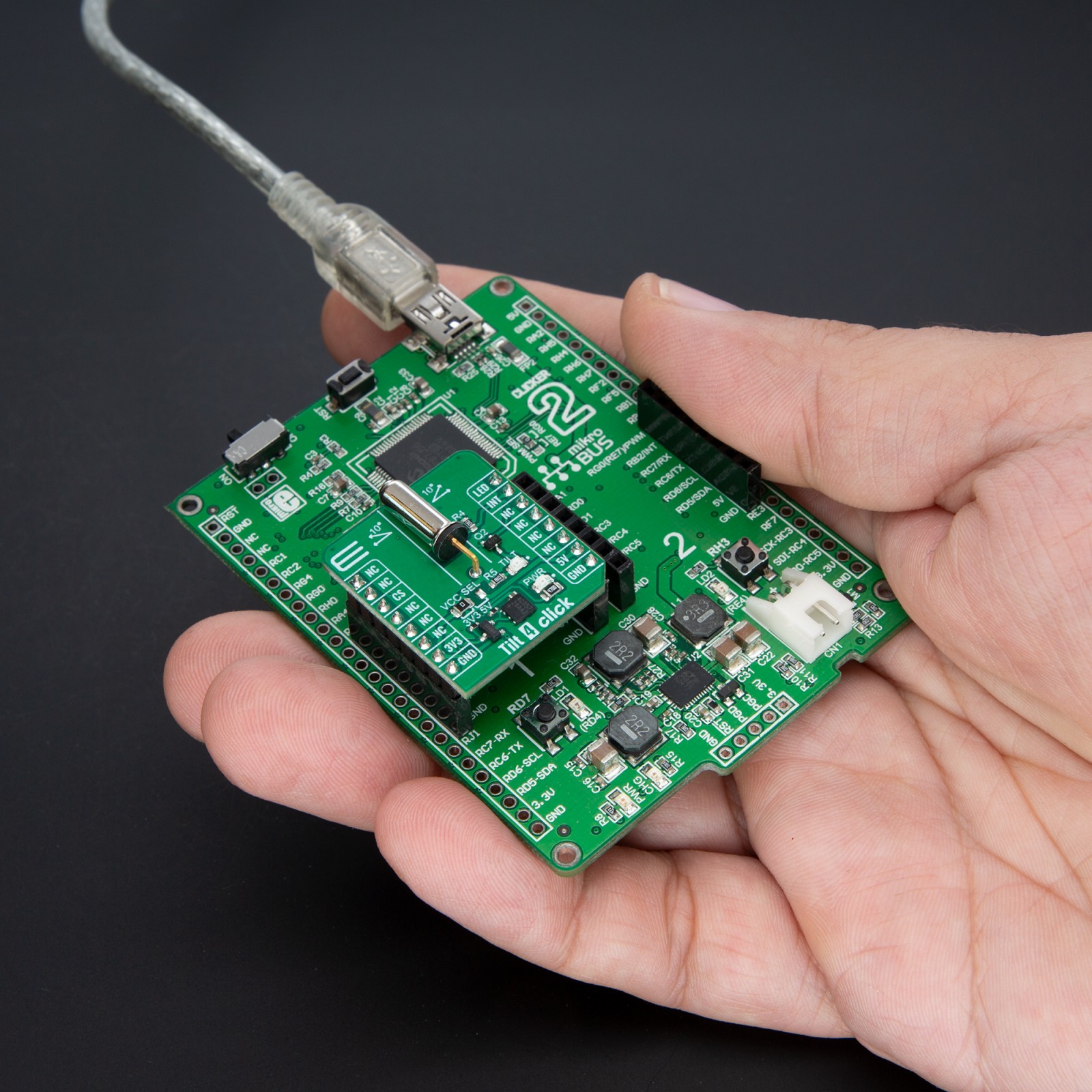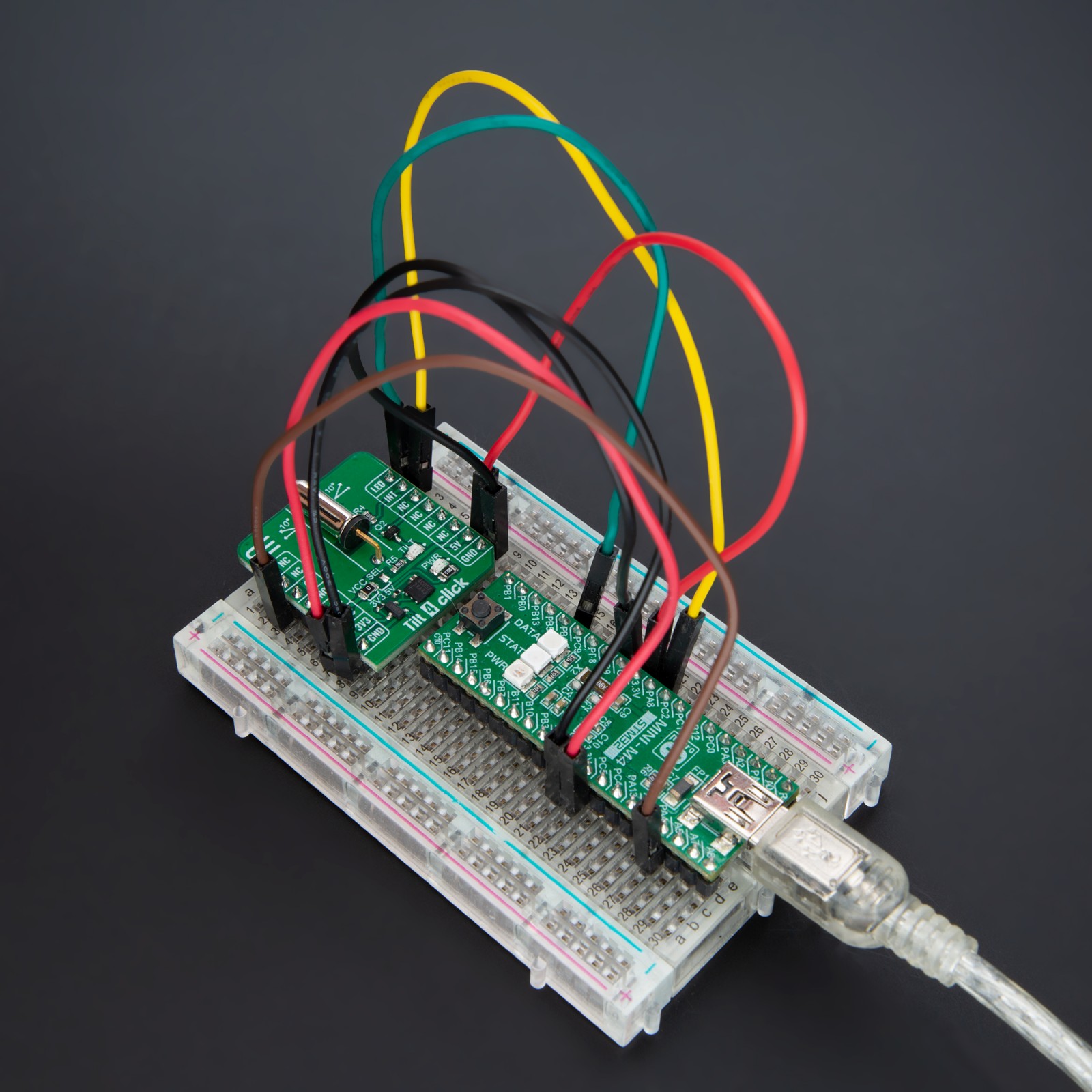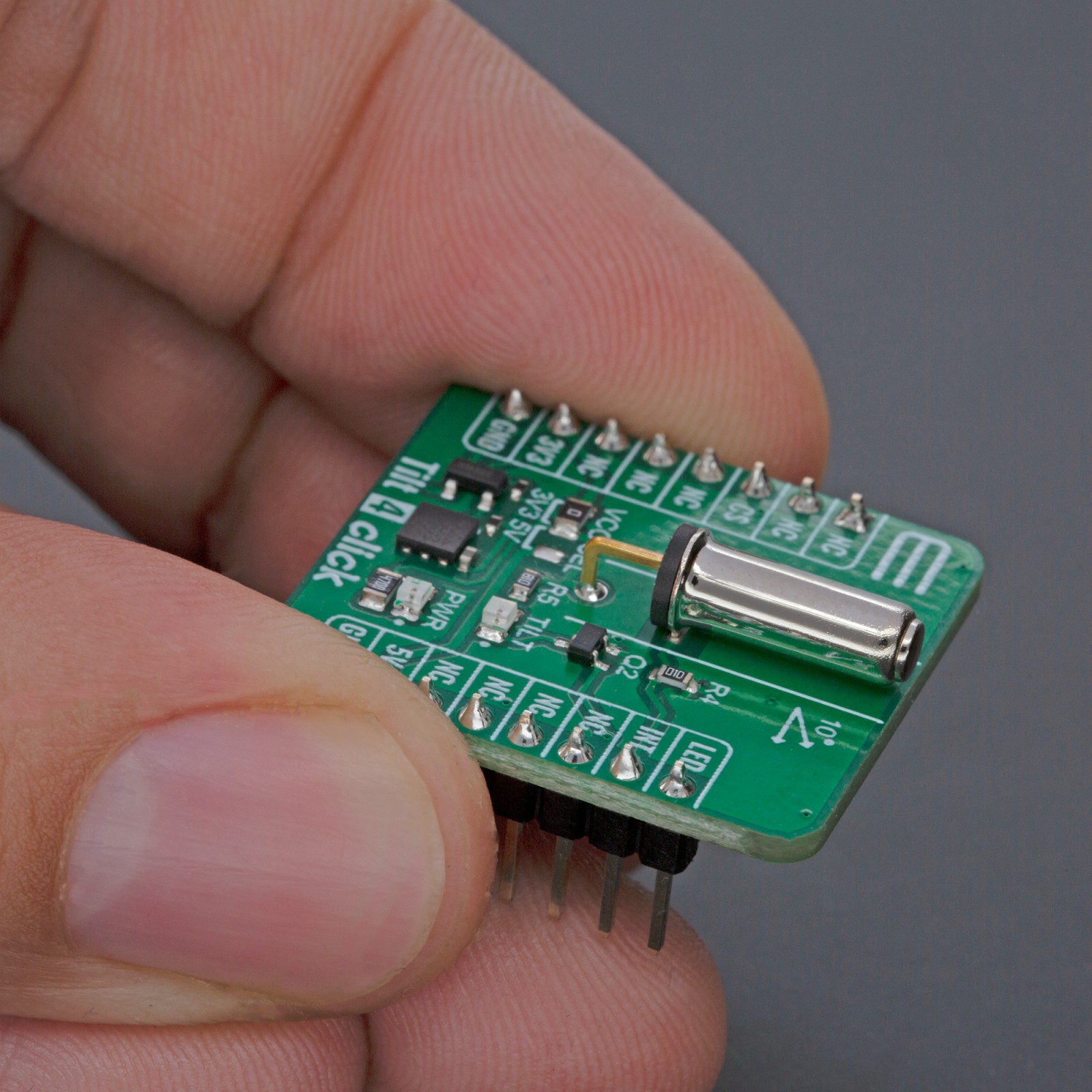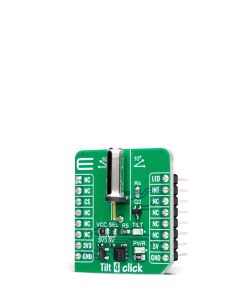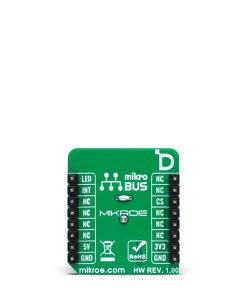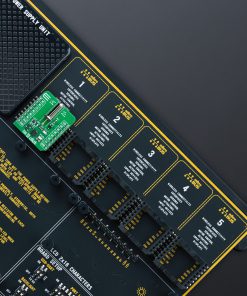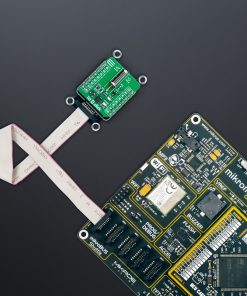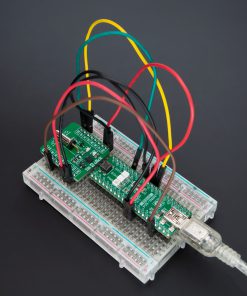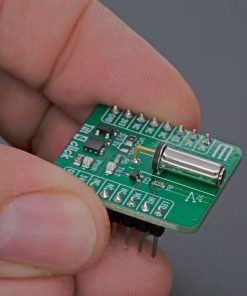Tilt 4 Click
R260.00 ex. VAT
Tilt 4 Click is a compact add-on board designed for reliable tilt detection applications. This board features the RB-231X2, a rolling ball tilt switch from C&K Switches (Littelfuse), ensuring accurate and safe tilt detection. The RB-231X2 features a compact, shielded design with a detection angle of up to 10° and an operating life of 100,000 cycles. It interfaces with the MCU using only the INT and LED pins, providing real-time interrupt signals and visual tilt indication through a red LED. This Click board™ supports both 3.3V and 5V logic levels, making it versatile for various MCU applications. Ideal for movement detection, safety devices, white goods, and consumer electronics, Tilt 4 Click is a dependable solution for diverse tilt detection needs.
Tilt 4 Click is fully compatible with the mikroBUS™ socket and can be used on any host system supporting the mikroBUS™ standard. It comes with the mikroSDK open-source libraries, offering unparalleled flexibility for evaluation and customization. What sets this Click board™ apart is the groundbreaking ClickID feature, enabling your host system to seamlessly and automatically detect and identify this add-on board.
Stock: Lead-time applicable.
| 5+ | R247.00 |
| 10+ | R234.00 |
| 15+ | R221.00 |
| 20+ | R212.68 |

